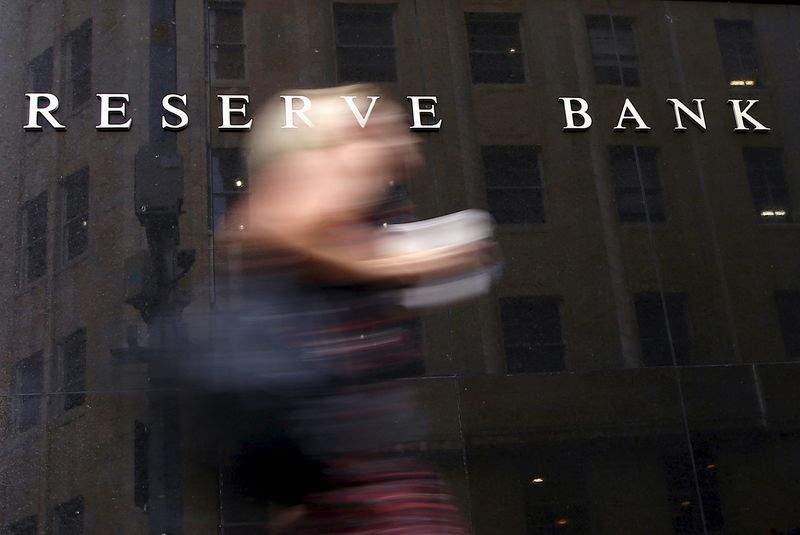(Adds details, quotes from asst gov Kent, market reax)
By Swati Pandey and Wayne Cole
SYDNEY, Oct 20 (Reuters) - Australia's central bank discussed the possibility of further monetary easing at its October board meeting, including cutting the cash rate towards zero and buying longer-dated government bonds, minutes of its most recent meeting showed on Tuesday.
Reserve Bank of Australia (RBA) board members noted larger balance sheet expansions by other central banks had led to lower sovereign yields in most other rich nations, minutes of the Oct.6 meeting showed.
Board members also discussed implications for the exchange rate, providing the clearest sign yet the RBA will likely soon cut rates further and expand its massive bond buying campaign, to lower both borrowing costs and the local dollar.
Yields on Australia's 10-year government bonds AU10YT=RR were down at 0.75% on Tuesday from 0.9% at the start of the month. That is in-line with U.S. Treasuries but still higher than UK, Germany, France, Canada and Japan.
The RBA has held its cash rate at a record low 0.25% since an emergency 50 basis points (bps) cut in mid-March. Economists widely predict the RBA will trim the rate at its Nov.3 policy meeting by 15 bps to 0.1%. AU/INT
The minutes showed those predictions could prove accurate as RBA board members expressed opinions that further monetary easing would be effective as the economy opens up from coronavirus-led restrictions.
Some Australian states and territories have effectively eliminated the virus while others such as the most populous state of New South Wales has been successful in curbing small outbreaks.
Ahead of the minutes, RBA Assistant Governor Chris Kent said one of the monetary tools for the board was to buy bonds further out the yield curve. purchases further out could occur on a regular basis ... and the intention there is to bring down the longer end of the yield curve that would reduce funding costs," Kent said in reply to a Reuters query at an event in Sydney. will also probably have some additional portfolio balancing effects, including on the exchange rate."
The Aussie dollar AUD=D3 slipped to a three-week trough of $0.7053.
Apart from further monetary easing, the board also discussed the nature of its forward guidance agreeing "to place more weight on actual, not forecast, inflation in its decision-making," the minutes showed.
"Members indicated that they would also like to see more than just progress towards full employment before considering an increase in the cash rate, as the Board views addressing the high rate of unemployment as an important national priority."
The jobless rate is hovering near 7% now, having risen from around 5% pre-COVID. Economists say the actual level of unemployment would be even higher if those on government support are included.
